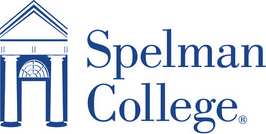Spelman's program review involves the following 4 major phases:
The last phase of the process supports institutional, department and program planning, and encourages continuous improvement.
Completion of a self-study and an onsite visit by external reviewers comprise the first and second step of the program review process. An overview of these activities is provided below. For additional details or to review the other steps in the process click the appropriate links in the left navigation bar.
Step 1: Preparation of the Self-Study Document
The self-study document consists of two parts:
Part 1: The self-study narrative is the heart of the project and focuses on assessing strengths and weaknesses in major aspects of unit operation.
Part 2: An appendix provides supplementary information to explain further and support section 1.
Part 1: Self-Study Narrative
Cover Page/Program Information Page – List all degrees and majors offered and list any centers or initiatives. Identify faculty participating in the completion of the self-study report. This will serve as the cover page.
Program Description – Spelman College Bulletin.
Response to Previous Program Review (if applicable) – Summarize the findings and recommendations from the last review. Discuss actions or strategies implemented and the status of any program modifications.
Section I: Program Quality
This section addresses program accreditation, program mission alignment, program resources (fiscal, human and physical) and the methods and processes for ensuring quality within these areas.
Accreditation (if applicable) — List all accrediting bodies & current program status.
Program Mission Alignment — Provide a summary of the program history and discuss the program vision, mission, goals, and their congruence with the college's mission.
Program Resources — Discuss the organization of the unit and leadership roles, outline faculty and staff qualifications, and appointment workloads for the past five years, including online workloads. Discuss faculty scholarship and recruitment and retention. Discuss the adequacy of budget/financial resources and how the resource allocation aligns with the strategic priorities of the college. Discuss the adequacy of physical resources and facilities that support the strategic priorities of the college and the program.
Section II: Program Effectiveness
This section addresses program content, the curriculum, student learning outcomes, student success measures and program assessment and the extent to which these are effectively delivered.
Curriculum (previously the Academic Program) — Discuss the mission and purpose of the program and its curriculum. Discuss the course offerings and requirements and how they ensure students have deep and rigorous content knowledge and the ability to apply this understanding in authentic ways. Outline program requirements and course sequences and how each supports effective student learning.
Student Learning Outcomes—Discuss the program's learning objectives and how they are assessed and revised. Summarize the results of annual program assessments, both strengths and weaknesses.
Student Profiles — Discuss enrollment, retention and graduation within each program major and minor. Outline any trends in these areas. Discuss recruitment and retention strategies.
Program Assessment — Discuss the short-term and long-range strategic goals of the program and how these support the College’s institutional goals. Outline program assessment strategies and how these strategies are used to improve student success, teaching effectiveness and faculty excellence.
Section III: Summary and Implications
This section brings together what has been reported in the self-study narrative. This section can be a useful summary for the External Review Team.
Key Findings and Considerations — Enumerate key findings from the self-study.
Implications — Provide an interpretation of the evidence supporting the program’s overall quality and effectiveness.
Future Goals and Priorities — Discuss how program faculty and the college can build upon any strengths or perceived areas of growth.
Part 2: Appendices
Appendix A: Faculty - Include data and information on program faculty covering the past five years.
Appendix B: Students - Include data and information on students within the program covering the past five years.
Appendix C: Academic Program - Provide additional data and information on the academic program. This includes a faculty qualifications list and the program’s curriculum map.
Step 2: The External Review and Onsite Campus Visit
Step 2 of the Program Review process consists of a two-day on-campus review completed by an external team of selected scholars and peers from other institutions. This phase is an opportunity for programs to dialogue with colleagues in their respective fields and discuss any strengths, challenges, or areas for growth. The external review and on-campus visit culminate with a written report from the review team.
Spelman College is accredited by the Southern Association of Colleges and Schools Commission on Colleges to award baccalaureate degrees. Contact the Southern Association of Colleges and Schools Commission on Colleges at 1866 Southern Lane, Decatur, Georgia, 30033-4097, or call 404-679-4500 for questions about the accreditation of Spelman College.
Institutional Effectiveness
350 Spelman Lane, SW
Atlanta, GA. 30314
404-270-5025
mburnett@spelman.edu
Mon. - Fri. | 9 a.m. - 5 p.m.
It's time to explore our beautiful campus! Sign-up today, bring your family, and let us show you what will make Spelman College your home away from home!
